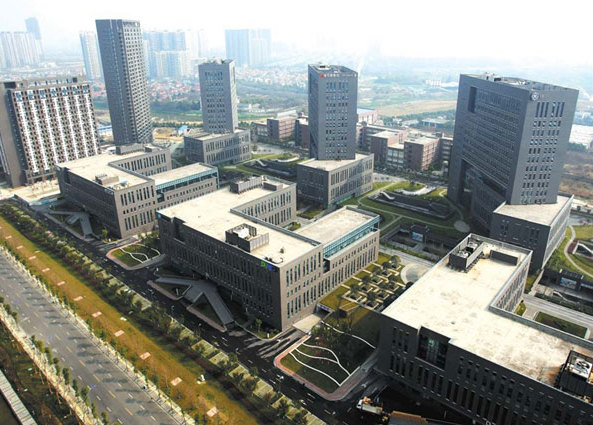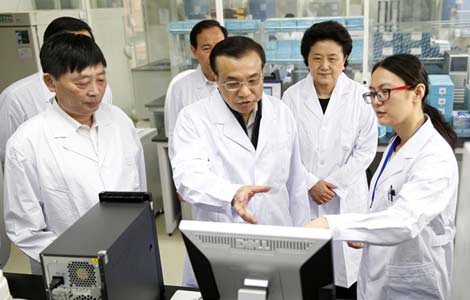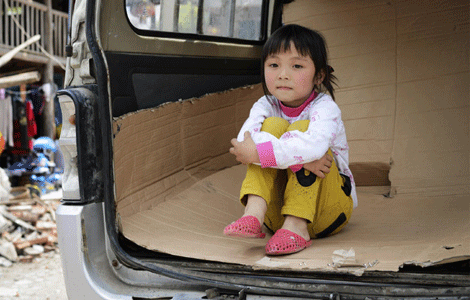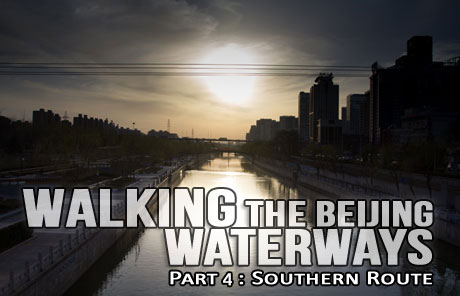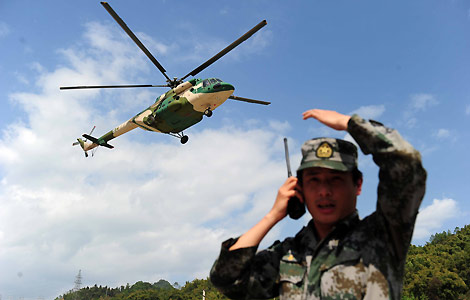Chengdu zone stresses ecology, industry
Updated: 2013-04-30 12:43
By Zhang Haizhou and Li Yu (China Daily)
|
||||||||

|
The Tianfu New Zone's software industrial park is among the many high-tech operations in Chengdu. Provided to China Daily |
Tianfu to reinvent Sichuan capital as industrial center, Zhang Haizhou and Li Yu report
From Chengdu's Rennan Flyover one can see two contrasting views of this flourishing city in western China.
To the north lies the familiar Chengdu, renowned for its natural beauty, great food and slow, laidback lifestyle.
But glancing south, one sees an entirely different city taking shape. It is Chengdu's Tianfu New Zone, a sweeping and ambitious project meant to accelerate Chengdu's development toward a modern, international and environmentally sound metropolis that is conducive to finance, trade and living.
"We want to build a different new zone that will be on a distinctive developmental track," said Zeng Jiuli, president and senior engineer at the Chengdu Institute of Planning and Design.
This 1,578-square-kilometer development zone, which spans from Chengdu to its southern neighboring townships and cities, was founded in May 2011. It is expected to be an engine for the city's growth in the coming years.
The zone is intended to transform the whole area into a "city within a city" that houses major global finance firms, the Tianfu Software Park, several incubation centers for IT and biochemical endeavors, the world's largest standalone building and one of the most beautiful contemporary art centers in China, which is designed by British architect Zaha Hadid. Its notable natural features include Longquan Lake, Sancha Lake and Longquan Mountain.
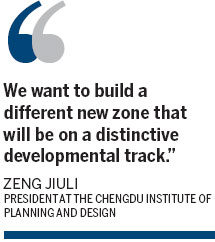
The new zone contains a total of three sub-cities, seven counties, and 37 towns and neighborhoods. About 81 percent of the zone overlaps with Chengdu's municipal boundaries.
'Industrial Chengdu'
Several top-level and multi-billion-dollar industrial facilities and clusters are currently under construction in the zone.
Tianfu's directors hope to grow it into an industrial supplement to Chengdu by 2020 and to transform it into a modern residential and commercial city by 2030.
One major objective is to reconstruct an "industrial Chengdu". The manufacturing sector will play a crucial role in developmental objectives in the near-to-mid term. In the long term, the industrial development will shift from manufacturing to research and development and services.
The new zone will encompass six key industries, including IT, auto manufacturing, clean energy, new materials, equipment manufacturing, and biomedicine, according to the Chengdu Economics and Information Commission.
The Sichuan provincial government announced in March that by 2030 the new zone's GDP will amount to 1.2 trillion yuan ($190 billion).
The total output value of the zone is expected to exceed 250 billion yuan by 2015 and to reach 650 billion yuan by 2020, said Tang Limin, chief of the Sichuan Development and Reform Commission, citing the Overall Plan for Tianfu New Zone.
By reaching these targets, the zone will achieve the goal of "building a new industrial Chengdu", Tang said.
Chengdu's output value grew 15.2 percent year-on-year in 2011 to 685.5 billion yuan, according to data from the Chengdu Municipal Statistics Bureau.
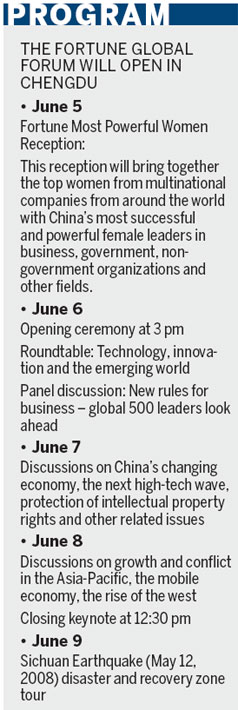
Behind Chengdu's ambitious goals are the city's efforts in protection of intellectual property rights. The capital of Sichuan is now known as the country's model city for IP creation.
A story in the newspaper alliance European News Agencies said Chengdu has "the lowest investment risks as well as the best IP protection across the country".
The writer also called on European companies to seize the opportunity to locate their projects in the city for faster growth.
American companies in China, too, consider Chengdu as their most favored destination if they seek expansion in China, according to China Business Report 2012-2013 by the American Chamber of Commerce in Shanghai.
But planners say there is no need to be concerned that this major project will fundamentally alter the laidback character of the Sichuan capital and make it into another industrial behemoth.
In addition to concentrating on industrial and economic growth, Zeng of the Chengdu Institute of Planning and Design, said leaders on the new zone plan to put "ecology first".
"From the site selection to the planning concepts, ecology is always the most important thing," she said. "The new zone is located in the hilly areas, so the city's vast farm lands are protected."
Unlike most other existing industrial zones in China, Zeng said the planners have "incorporated urban life into industries", which is a key innovation of the new zone.
"Those existing 'new zones' focused mainly on industries and have fallen short in terms of urban service and other public amenities. But the Tianfu New Zone will be like a community with sufficient basic needs like shopping malls, cinemas, and restaurants. It tries to achieve work and life balance for residents and professionals inside," she said.
Public transit, especially the bus system, will be the principal means of travel in the new zone.
"Connections between the subway and buses are seamless because we expect public transit to account for more than 50 percent of the total traffic," Zeng said.
"We are making a different new zone."
(China Daily 04/26/2013 page17)
Most Viewed
Editor's Picks

|

|
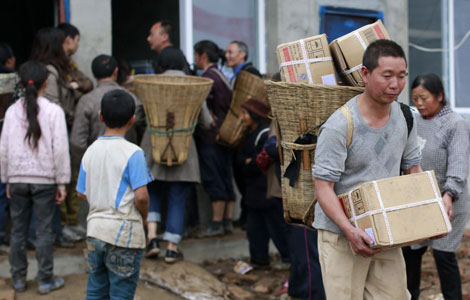
|

|

|

|
Today's Top News
Three buried after lab explosion
Willem-Alexander ready to be Dutch King
Can earthquakes be predicted?
City unites to say farewell
Beauties turn entrepreneurs
Small stores rely on new retail revolution
Flooding season nears in Ya'an
Taobao creates job specifications
US Weekly

|

|
